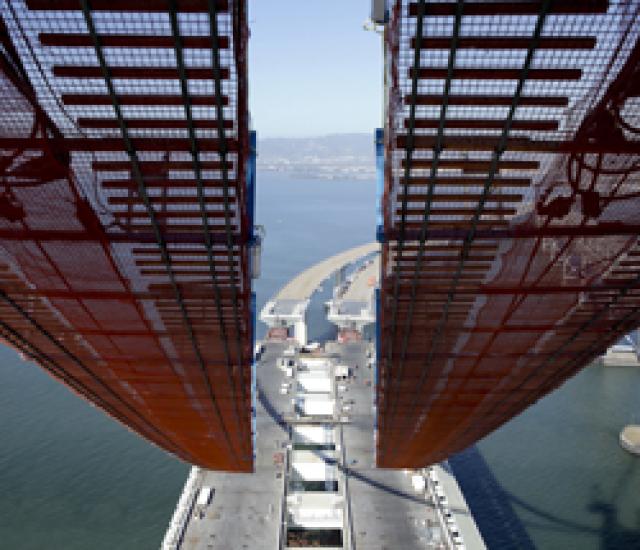Big U.S. public pension funds sat on the sidelines during the financial crisis, but now they are boosting their infrastructure investments. There are plenty of opportunities as cash-strapped governments search for capital to build, repair and run everything from airports and power grids to bridges and waste facilities.
As demand has surged, infrastructure managers have followed. “The need is real, present and sizable,” says Scott Sinha, Boston-based director of research in the infrastructure investment group at RBC Global Asset Management. In a 2009 report the American Society of Civil Engineers estimated that the U.S. would need $2.2 trillion through 2014 for pipelines, highways and ports.
Fundraising is heating up again. After a record 46 private investment funds launched globally in 2008, representing $37.3 billion, only 18 opened in 2009, which saw a mere $8.4 billion raised, according to London research firm Preqin. But the pace quickened in 2010, when $31.6 billion was raised. Today, Preqin counts 220 private partnership managers dedicated to infrastructure.
Infrastructure projects work best when the host government takes a programmatic rather than a one-off approach, says Christopher Leslie, CEO of Macquarie Infrastructure Partners, a division of Sydney-based Macquarie Group that manages $5.6 billion in two North American funds. New York–based Leslie adds that 25 U.S. states are embarking on infrastructure programs.
Fee restructuring is another draw. Infrastructure funds take three to five years to invest, says Michael Underhill, founder and CIO of Capital Innovations, a discretionary infrastructure adviser in Hartland, Wisconsin. With $165 billion raised worldwide in the past five years, there’s a backlog of unused capital. At the Sacramento-based California Public Employees’ Retirement System, $645 million awaits deployment.
Private partnerships, or “unlisted” funds, the main vehicle that pension funds use to access infrastructure, once charged limited partners a 2 percent management fee while sitting on cash. They’re now limiting fees to invested capital and reducing carried interest.
U.K. pension funds first embraced infrastructure three decades ago, when former prime minister Margaret Thatcher started selling off public assets. U.S. funds only warmed to it after high-profile deals like the 2005 lease of the Chicago Skyway to a $1.83 billion joint venture between Macquarie and Madrid-based infrastructure manager Cintra. “It found a home and caught fire just before the financial crisis hit,” Macquarie’s Leslie explains.
Although the Florida State Board of Administration and the Kansas Public Employees Retirement System recently began investing in infrastructure, $239 billion CalPERS was the first U.S. pension fund to establish a dedicated portfolio. It did so in 2007 under then-CIO Russell Read, who saw the asset class as a diversifier, an inflation hedge and a source of steady, long-term cash flow from income such as tolls. Since inception through June 30, CalPERS’s $289.5 million infrastructure portfolio returned an annualized 14.7 percent.
As large pension investors gain infrastructure experience, they move to direct or co-investing. APG Asset Management, which invests on behalf of the Netherlands’ €242 billion ($346.9 billion) Algemene Pensioen Groep, launched its infrastructure portfolio in 2004 by allocating to a few funds. Last December, when J.P. Morgan Asset Management’s infrastructure investments group bought a two-thirds position in a group of Spanish ports, APG took on the rest. Noatum Ports (previously known as Dragados Servicios Portuarios y Logísticos, or DSPL) is the 12th-largest global container terminal operator and the second largest in Southern Europe. It consists of a portfolio of four major container terminals and three major bulk and vehicle terminals located across Spain. Its key asset is Marítima Valenciana (Marvalsa), Spain’s second-biggest container terminal, located in the port of Valencia. Marítima del Mediterráneo (Marmedsa) is the leading provider of port services and logistics in the Iberian peninsula. It has a well-diversified activity portfolio (shipping agency, forwarding services and customs brokerage), including six smaller conventional terminals. In late 2010 institutional investors advised by JPAM, including the Dutch pension fund ABP, acquired Noatum Ports. In a separate acquisition institutional clients advised by JPAM completed the acquisition of Marmedsa. Besides low return potential when assets stay in public hands, infrastructure investments have other risks. They include economic sensitivity — people may stop using toll roads in a recession — and excessive leverage, a hazard in the run-up to the 2008 crisis.
But Mark Weisdorf, New York–based CEO of the $8.5 billion infrastructure investments group at J.P. Morgan Asset Management, sees lots of potential. First, if interest rates rise, so will income from tolls and utility fees. Second, huge deposits of shale gas require massive infrastructure to develop. Third, the U.S. waste and water system will go the way of its U.K. counterpart, which is down to 28 facilities from thousands pre-Thatcher. Last, Weisdorf notes, ?Asia will need an estimated $8 trillion in new infrastructure over the next decade. • •






